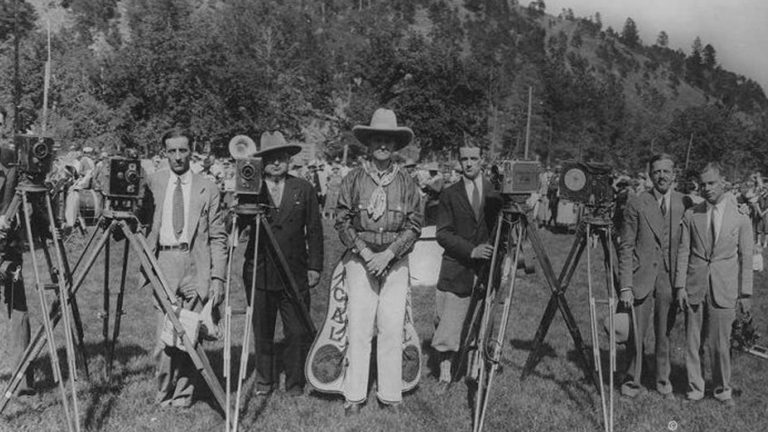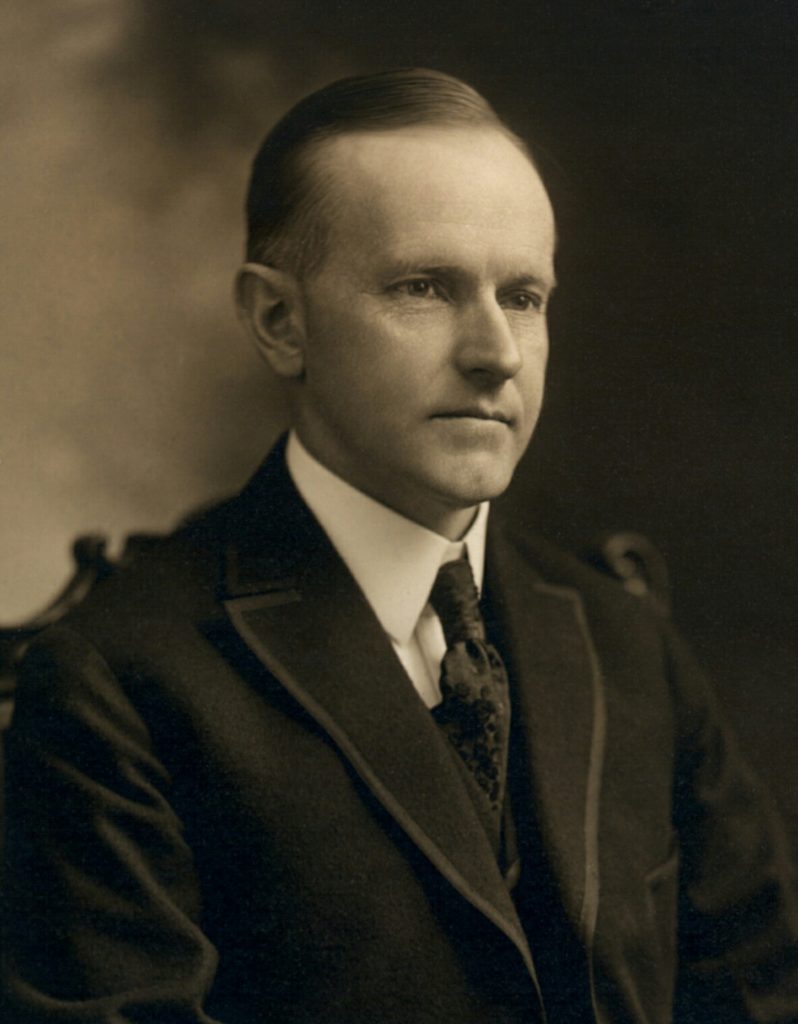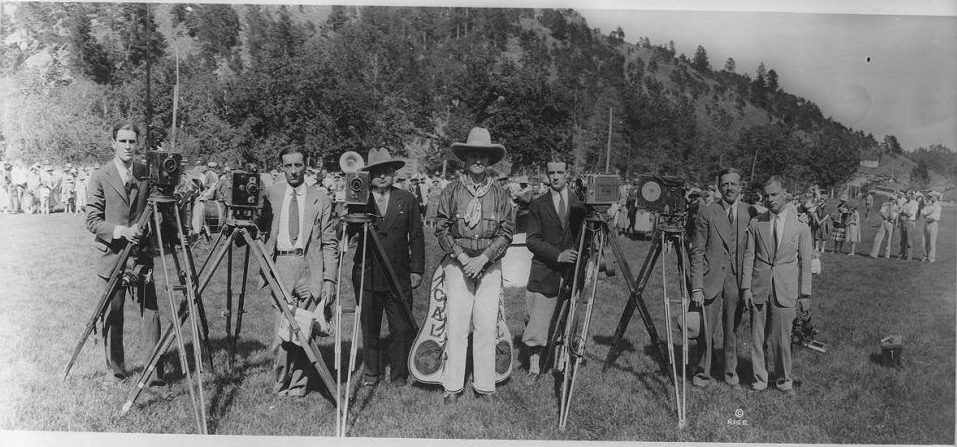Undoubtedly the most exposure the Black Hills region has ever received, was in the summer of 1927 during the 3-month “visit” of President Calvin Coolidge.
The President announced that he wanted a summer away from bugs, crowds, a scheduled White House renovation, and the bad Washington, D.C. air that irritated his bronchitis. Politicians, railroad officials, and members of the cabinet petitioned have him spend his vacation in the Black Hills and were duly rewarded when Calvin and Grace Coolidge left the Capital by train on June 13.
On the evening of June 15th, South Dakota Governor William Bulow, Senator Peter Norbeck and nearly 10,000 South Dakotans welcomed the President, Mrs. Coolidge, and son John, as they stepped from the presidential train at the Chicago and North Western Railroad’s depot in Rapid City. The first family (with their two white collies Rob Roy and Prudence Prim, black chow, and the First Lady’s pet raccoon Rebecca), along with dozens of staff members, secret service agents, political dignitaries, and media brought a great deal of excitement and notoriety to the area in the coming weeks.
The president set up formal offices for himself and other officials in the Rapid City High School and settled comfortably into the Game Lodge, a handsome twenty-room timber and stone structure near Hermosa (about 25 miles south of Rapid City) featuring a massive stone fireplace, heavily beamed living room, and buffalo skins on the floor and walls. It was recorded later that the brook nearby and a ridge of pine-covered hills reminded the Coolidges of the Green Mountains of their native Vermont. Staff and guests stayed in nearby rustic log cabins.
Black Hills residents were elated to have such important guests as the President and First Lady staying with. Early on, some locals presented Coolidge with a horse, a large-brimmed Western hat, and boots as gifts. The president adopted the hat and boots (worn with his regular tailored suits) as his local attire.
The Coolidges easily took to the Dakota way of life. They attended weekly church services in a small white church at Hermosa where a twenty-one-year-old student minister, Rolf Lium, delivered his first sermon to none other that the President and First Lady. The young preacher later said he was grateful for Mrs. Coolidge’s smile as it reduced his nervousness about preaching to the President.
Their three-weeks turned into a three-month stay, and the Coolidges also made visits to Indian reservations, mines, farmers’ picnics, county fairs, church socials, and rodeos. Coolidge relished the area’s climate, professed to feeling healthier, and enjoyed a great deal of fishing.
While Grace quietly knitted on the porch of the Game Lodge and took nature hikes, Calvin spent time successfully trout fishing, even though he had never tried it before. Coolidge did not know that before his arrival Custer State Park officials had chicken wire stretched across the creek upstream and downstream from the Game Lodge. Lunker trout from a nearby fish hatchery were trucked in nightly under the cover of darkness—so many that Coolidge could not help but fill his creel as he “learned to fish.”
He also presided over the official dedication of a mountain-carving project near the summer White House named Mount Rushmore. Coolidge’s goodwill was helpful in the effort to raise funds for the monument; he signed the first large appropriation bill for the project just days before the end of his presidency. On August 10, the President rode horseback with his entourage up the mountain, sporting the boots and 10-gallon hat given to him by local residents.



